Yesterday I came across this post: What is GeometryReader in SwiftUI?, and I was curious about the behavior of GeometryReader, so I went on some experimentation, and the following is what I did after finished reading the post:
import SwiftUI
import PlaygroundSupport
/* ------- Approach 1 ------- */
struct ViewGettingSize: View {
@Binding var size: CGSize
func makeView(with geometry: GeometryProxy) -> some View {
// ⭐️ Try to update @Binding var `size`,
// but SwiftUI ignores this assignment, why?
// @Binding var `size` is NOT updated.
self.size = geometry.size
print(geometry.size) // (158.5, 45.5)
print(self.size) // (50, 50)
return Color.pink
}
var body: some View {
GeometryReader { geo in
self.makeView(with: geo) // Color.pink
}
}
}
/* ------- Approach 2 ------- */
struct SizePreferenceKey: PreferenceKey {
static var defaultValue: CGSize = .zero
static func reduce(value: inout CGSize, nextValue: () -> CGSize) {
value = nextValue()
}
}
struct ViewSettingSizePreference: View {
func makeView(with geometry: GeometryProxy) -> some View {
print(geometry.size) // (158.5, 45.5)
return Color.orange
.preference(key: SizePreferenceKey.self, value: geometry.size)
}
var body: some View {
GeometryReader { geo in
self.makeView(with: geo) // Color.orange
}
}
}
/* ------- Test These Approaches ------- */
let text = Text("some text").font(.largeTitle)
// live view
struct ContentView: View {
@State private var size = CGSize(50, 50)
@State private var size2 = CGSize(50, 50)
var body: some View {
VStack {
Group {
/* ------- Approach 1 ------- */
text
// ⭐️ this one doesn't work.
.background(ViewGettingSize(size: $size))
Color.blue
// ⭐️ `size` is still (50,50)
.frame(width: self.size.width, height: self.size.height)
/* ------- Approach 2 ------- */
text
// ⭐️ this one works.
.background(ViewSettingSizePreference())
.onPreferenceChange(SizePreferenceKey.self) { (size) in
print(size) // (158.5, 45.5)
self.size2 = size // ⭐️ `size2` updated successfully.
print(self.size2) // (158.5, 45.5)
}
Color.purple
.frame(width: self.size2.width, height: self.size2.height)
}// Group
.border(Color.black)
}// VStack (container)
.padding()
.background(Color.gray)
}
}
PlaygroundPage.current.setLiveView(ContentView())
Result:
From above, I used two approaches and tried to update the ContentView through updating its @State variables, although the second approach was successful, but the first one failed, does anyone know why it failed? Thanks.
